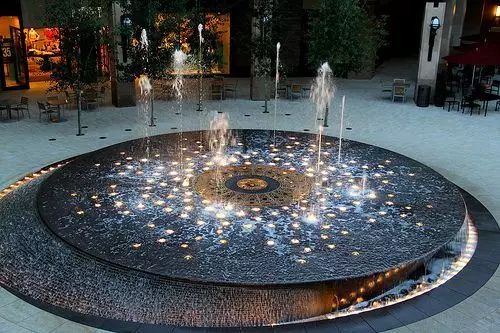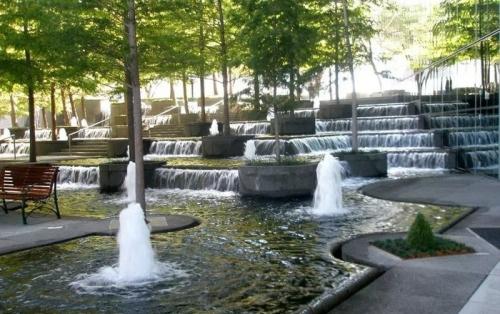Several Principles of Residential Waterscape Design
Publish Time:2019/09/18 NEWS 标签:waterscape designNumber of views:1063
Nowadays, with the rapid development of economy, people are demanding higher and higher housing conditions, and residential waterscape emerges as the times require. The design of residential waterscape is slightly different from other waterscape designs, and the principles followed are also different. Following is a brief introduction to several design principles of residential waterscape.

Firstly, measures should be taken according to local conditions. Adapting measures to local conditions includes two meanings: one refers to two different climatic characteristics and different geological conditions in the same region. As far as the interior of China is concerned, there are great differences in climate conditions between the north and the south. The South has warm and humid climate and abundant rainwater, which is suitable for building water scenery in residential buildings. However, the north is dry and rainwater is scarce, so it is not suitable for large-scale design of water scenery in residential buildings. But the embarrassment of waterless winter can usually be replaced by the Japanese landscape of dry mountains and rivers.
Two different climatic characteristics determine the scale and quantity of residential waterscape design. If the opposite is done, it will inevitably increase the investment of funds and increase maintenance costs. The second point is to make rational use of the existing natural conditions in the site, and to rectify the original natural waterscape such as streams, rivers and ponds in the site as long as the designer can according to the planning, and try to integrate them into the surrounding landscape. It is unwise and undesirable to change their location and scale at will. However, in the absence of natural Waterscape in the site, we should also minimize the amount of earthwork according to the actual situation in the base, in order to reduce economic costs.

Secondly, from the specific elements of residential waterscape design, functional elements have natural waterscape, mainly manifested in various revetments, wooden trestle roads and so on. There are also swimming pool waterscape, landscape water and so on. Horticultural elements include courtyard sketches, such as waterfalls, streams, falls, ecological pools, and other decorative waterscapes, such as fountains, reflection pools, etc.
Thirdly, because of the small size of residential water body, if the water body alone, without any additions, such as rocks, hydrophilic platforms, wooden trestles, small landscape buildings, etc., then the waterscape is not rich enough, lack of vividness, and vice versa. Similarly, with the help of science and technology, the water body will change more according to people’s wishes, such as fountain, spray, water modeling and so on. Similarly, if there are beautiful water lilies, duckweeds and other aquatic plants floating on the water surface, and happy and comfortable fish under the water, then the water landscape is more beautiful. Therefore, residential waterscape is not a narrow sense of water, but static inanimate water into a rich and vivid waterscape landscape.
Finally, we should pay attention to ecological and environmental protection. Because of the destruction of the earth’s ozone layer and the excessive use of natural resources, it is urgent to protect the ecological environment. For residential waterscape landscape design, attention should also be paid to its ecology, mainly embodied in two aspects: not destroying the original water resources, and not violating the natural law in Waterscape design.
- What are the requirements for water qualit...
- What are some tips to pay attention to in ...
- How to keep a beautiful fountain waterscape
- Music fountain design and selection
- Custom Musical Fountain Installation Servi...
- What function does a running fountain have?
- What are the main functions of water featu...
- Several Water Supply Forms of Fountain Equ...









